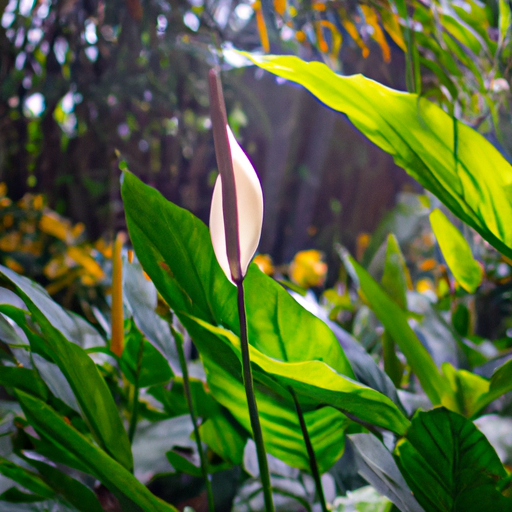Can a Peace Lily Thrive Outdoors? Planting Tips and Considerations
Peace lilies (Spathiphyllum), with their elegant white flowers and glossy green leaves, are popular houseplants known for their ability to purify indoor air. However, many plant enthusiasts wonder if these beautiful plants can also thrive outdoors. In this article, we will explore whether a peace lily can be planted outside and provide some planting tips and considerations to help you successfully grow them in your garden.
Can a Peace Lily Be Planted Outside?
The short answer is yes, peace lilies can be planted outside, but there are a few important factors to consider before making the decision. Peace lilies are native to tropical rainforests, so they prefer warm and humid environments. If you live in a region with a similar climate, you have a higher chance of successfully growing peace lilies outdoors.
However, it’s important to note that peace lilies are not frost-tolerant plants. They are sensitive to cold temperatures and can suffer damage or even die if exposed to freezing conditions. Therefore, if you live in a colder climate, it’s best to keep your peace lilies as indoor plants or consider growing them in containers that can be moved indoors during winter.
Planting Tips for Peace Lilies Outdoors
If you have determined that your climate is suitable for growing peace lilies outdoors, here are some planting tips to ensure their success:
- Choose the right location: Peace lilies thrive in bright, indirect light. Find a spot in your garden that offers partial shade or filtered sunlight. Avoid direct sunlight, as it can scorch the leaves.
- Prepare the soil: Peace lilies prefer well-draining soil that is rich in organic matter. Amend your garden soil with compost or peat moss to improve its fertility and drainage.
- Planting process: Dig a hole slightly larger than the root ball of your peace lily. Place the plant in the hole, making sure the top of the root ball is level with the soil surface. Backfill the hole and gently firm the soil around the plant.
- Watering: Peace lilies like to be kept evenly moist but not waterlogged. Water them regularly, allowing the top inch of soil to dry out between waterings. Avoid overwatering, as it can lead to root rot.
- Fertilization: Feed your outdoor peace lilies with a balanced, water-soluble fertilizer every two to four weeks during the growing season. Follow the package instructions for application rates.
- Protection from extreme weather: As mentioned earlier, peace lilies are not frost-tolerant. If frost or freezing temperatures are expected, cover your plants with a frost cloth or move them indoors temporarily to protect them from damage.
By following these planting tips and considerations, you can enjoy the beauty of peace lilies in your outdoor garden. Remember to monitor your plants regularly for any signs of pests or diseases and take appropriate action if needed. With proper care, your peace lilies can thrive and bring a touch of elegance to your outdoor space.
In conclusion, while peace lilies are primarily grown as indoor plants, they can be successfully planted outside in suitable climates. Consider the specific conditions of your region, provide the right care, and enjoy the beauty of peace lilies in your garden.




